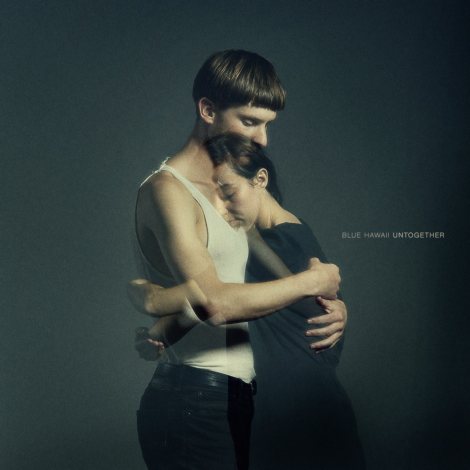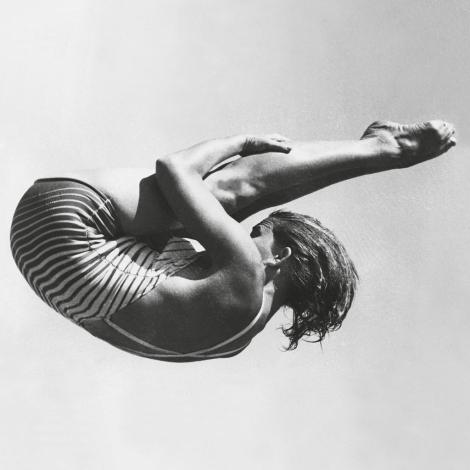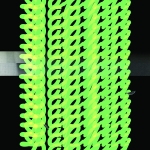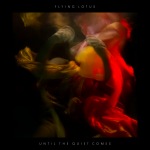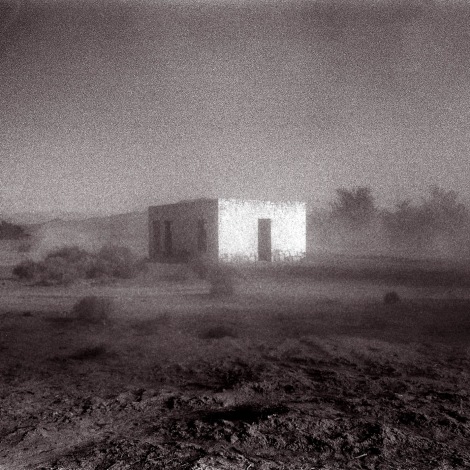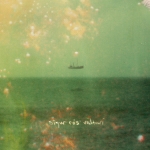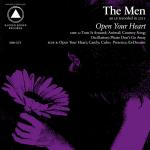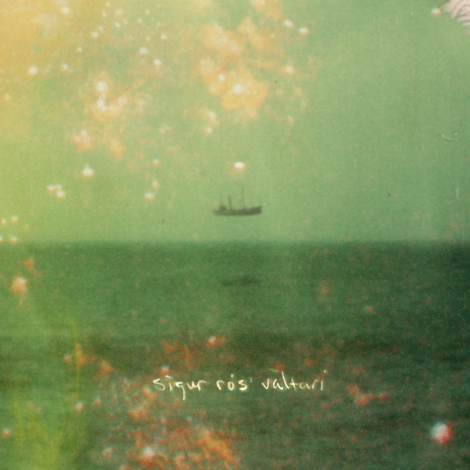 [Arbutus, 2013]
[Arbutus, 2013]
Buy: Direct
The artwork of Blue Hawaii’s Untogether perfectly depicts the music about to emanate from the record you’re pulling out of its sleeve. A man and a woman embrace, imposed atop one another in a way where it is unclear where the man ends and the woman begins, and vice versa. Each wears a forlorn expression, as if that unfathomable closeness is linked by the pain they share, by some dark connection that bonds them forever. Raphaelle Standell-Preston and Alexander Cowan (also known as Agor) present their music in the same way; at any given time it’s unclear where Cowan’s fluttering production ends and Standell-Preston’s voice begins. Untogether shows the purest integration of each of their gifts, and how the connection they share with their music allows them to become a singular entity.
The lines are blurred almost immediately. Bass bubbles pop and hiss in the lead-in of “Follow,” and Standell-Preston’s lone “Oh,” ping-pongs back and forth through the mix, establishing her vocal as a tool for Cowan to utilIze in his intricate arrangements. The song establishes Untogether’s dark atmospheric tones (a shocking contrast to their sunny Blooming Summers EP), and Standell-Preston’s long, haunting aria to open the record sounds like she is dueting with a glitching, robotic version of herself. The eerie intro gives way to intricately woven rhythmic textures that seem to burst into full life from nowhere; in fact, much of Untogether’s appeal is the fact that things come from nowhere, shockingly propulsive beats manifested out of moments of serenity.The two-part suite of “In Two” and “In Two II” oscillates from the contemplative to the utterly monumental. It’s easy to get lost in the waves of sound before you snap to at the sound of the dense, jungle rhythm of “In Two II.”
Untogether tells the tale of two records in a way, depending on how you decide to digest it. At low volumes, songs like the “In Two” suite come across as dreamy twinkles of electronica, but louder, more intimate examinations of the record prove there is some serious dancefloor fodder here. It’s a testament to the level of complexity at play in Blue Hawaii’s music that these two vastly different–opposing spectrum ends, even–listening experiences can be obtained from Untogether, and how well either of them stands apart from the other. The record is a new breed of headphone music; in combining the physical tendencies of dance music with the ear candy of cerebellum-attacking electronics, Cowan and Standell-Preston have found a very unique voice with Blue Hawaii.
Many fans of the Montreal duo didn’t think that Untogether was going to be made. Standell-Preston is also the singer of the dream pop outfit Braids, whose 2011 LP, Native Speaker, was shortlisted for the Polaris Music Prize (an annual award given to the best Canadian full-length record of the year). With Braids’ popularity taking off in between Blooming Summer’s release and the recording of Untogether, the future for Blue Hawaii seemed to hang briefly in the balance. It’s somewhat surprising that it all came together in such an impactful and cohesive way, given the changes within the duo’s dynamic at the behest of Braids’ success. Cowan said in a recent interview that, “The big difference between the last one and this one is that we were working on this one separately, sort of. I would spend a night in the studio doing stuff, and then Raphaelle would do it the other night, and we would kind of trade on and off duties doing that for the entire length of it. So this kind of weird thing developed where we never really played any of the songs together or we just worked on it in the music itself. We didn’t sit in the same room and do it until it was finished, and now we’re playing it live or whatever.” Standell-Preston commented that while the conditions weren’t ideal, they yielded a tremendous and interesting result, saying, “It was just kind of what life provided for us at that time.”
On the other hand, it doesn’t seem that the situation will change anytime soon. All signs point to Standell-Preston enjoying an evenly split life between the weighty pop of Braids and rapidly expanding electronica of Blue Hawaii. On the lead single of Untogether, “Try To Be,” she seems to be examining that dichotomy in her life-along with reconciling the loss of her childhood dreams–before finally coming to grips with it over a chorus of bleeps, saying, “May as well just be me.”





















